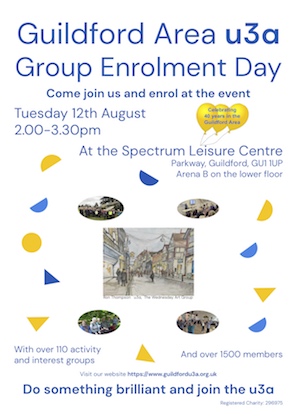- Sunday, June 29, 2025
- Stay Connected
 Abraham Lincoln
If given the truth, the people can be depended upon to meet any national crisis...
Abraham Lincoln
If given the truth, the people can be depended upon to meet any national crisis...
 Guildford news...
for Guildford people, brought to you by Guildford reporters - Guildford's own news service
Guildford news...
for Guildford people, brought to you by Guildford reporters - Guildford's own news service
New ‘Guildford Vision Group’ Claim GBC ‘Masterplan’ Is Flawed
Published on: 22 Mar, 2012
Updated on: 26 Mar, 2012
An audience of around 200 gathered at Millmead Baptist Church last night (March 21) to hear a panel of architects and planners criticise the council’s draft ‘Masterplan’, claiming that it lacked the necessary vision. Council Leader, Tony Rooth, was one of several councillors present to hear the remarks.
The organisers of the event are a group that have called themselves the ‘Guildford Vision Group’. The movement has emerged following a workshop organised by The Guildford Society in January, during which criticism of the Masterplan was also heard.
John Rigg, a senior figure from Estate Agents Savills who has led major development projects in London and elsewhere and is a local resident said: “I care about Guildford. It has the opportunity to give a lot more as a town, than it does today. It is failing to properly address traffic congestion and to make the most of its river front.”
GBC’s draft plan, he said had been very disappointing, “There were no visionary words of substance,” and consultation had been restricted by the Christmas holiday period. “Anyway,” he said, “everybody knows there is a difference between consultation and engagement.”
The Guildford economy was worth, he quoted, almost £4bn per annum, so it would be worth spending some time and money on a proper plan.
Mike Hayes, a specialist on ‘Localism’ explained that the new Localism Act was likely to make a big change in the way local planning decisions were made. The old detailed guidance, over 500 pages of it, was being replaced by a document of just 50 pages. Some are worried, he said, that the stated aim, to create a presumption of permission to develop, unless evidence could be produced that it was against a certain plan, will, some are predicting, create a ‘developers charter’.
Peter Studdart, a planner who had overseen some successful city planning in Cambridge said: “Planning is a very difficult challenge for historic town’s like Guildford. It is great that Guildford is twinned with Freiburg in Germany? Freiburg is an exciting city.” It was a place where good and imaginative planning had made a positive difference. There were four Cs required for good plans, he said: Community; Connectivity; Climate; and Character but to put all these together required Collaboration.
Anthony Rifkind of Allies and Morrison, the planning consultants brought in by The Guildford Society, said that a new plan is required, “Guildford is a very special town.”
His colleague Peter Bishop, who had once worked in the GBC planning department said: “We need to marry modern design with the town’s historic legacy.” He showed a picture taken looking northwest from the town bridge which, he said, illustrated the way that the town had been disconnected with one of its most important assets, the river. In his view, he added, residents and visitors viewing the gyratory could be forgiven for thinking: “The winner is tarmac and the loser the people of the town.”
Some points made during a question and answer session that followed were:
Changes in retailing patterns could cause our High Street in common with others to, “drop off the edge of an economic cliff.”
Town centres have to be more than just shopping centres. Those that will succeed will be those that are a pleasure to be in.
We should collaborate more with our twin town Freiburg and take full advantage of their experience.
The gyratory is a big problem, do we need a tunnel? [in response] There are already in existence plans with road tunnels.
The Vision Group seems to me made up of architects and others already in the property industry. [In response] We absolutely want involvement of all kinds of different groups and individuals.
Guildford Borough Council is a powerful clique. [To the panel] You would be better off working with them than trying to confront them.
Any vision will need to be accepted by the council – you have to include them.
“I fear,” said one member of the audience, “that in the end what will result [in terms of development] is another rabbit pulled out of the hat only to expire, pathetically.”
John Bannister, chairman of the Sustainable Energy committee within the Guildford Environmental Forum said: “The answer is not to build our way out with more tarmac and concrete. He then asked the question, “How do we deal [in traffic planning terms] with local people who want to go two or three miles but don’t want to walk?”
The meeting ended with some optimism when shows of hands revealed that:
a. very few in the audience thought that the group’s efforts were unlikely to make a difference,
b. most were happy to sign up straightaway to support the group, while everyone else was at least happy to receive more information about the initiative.















Ros Calow
March 26, 2012 at 9:05 am
Our daughter lives in Cambridge and the traffic system there is truly terrible, far worse than Guildford. I don’t think there are any lessons to be learnt from Cambridge apart from to avoid what has been done there.